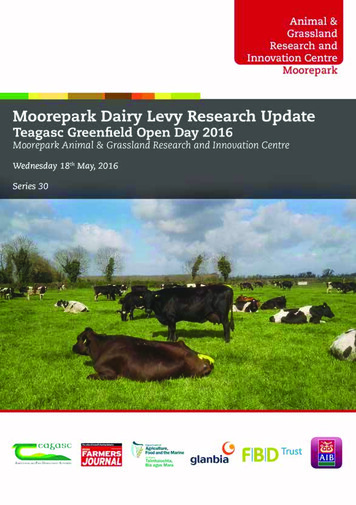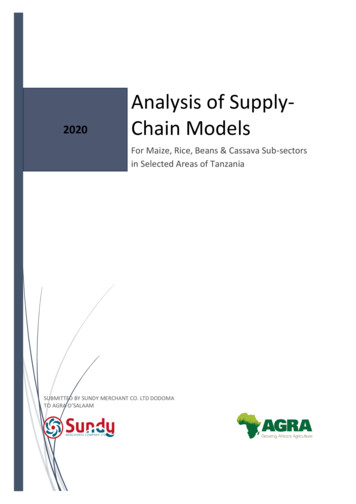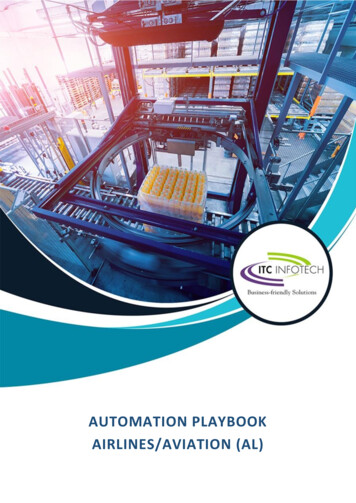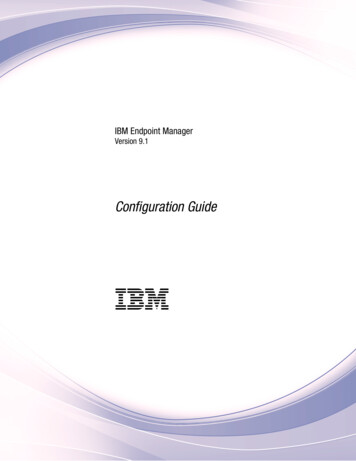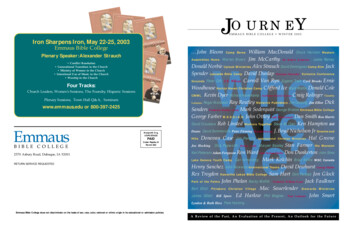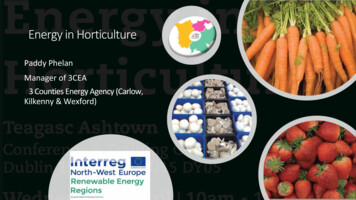
Transcription
Energy in HorticulturePaddy PhelanManager of 3CEA3 Counties Energy Agency (Carlow,Kilkenny & Wexford)
Setting the Scene today Domestic Pilot Grant Scheme Demand Side AssessmentCase Study– Storage and its role RESS/Microgen SupportsUrgency for Auto generation 1MWh Conclusion–Content
Abstract:Storck, H. (1978) .Energy-oriented economic research is neededTOWARDS ANECONOMICS OFENERGY INHORTICULTURE–1st - to increase the efficiency of an important andincreasingly expensive and scarce production meansin horticulture under glass in order to improve thefinancial results of the horticultural firms.2nd, one needs information and models about theenergy flows in horticulture for appraising thewelfare benefits of the industry and for evaluatingpolitical decisions on energy policy affecting it.3rd - this research should be seen in the broaderframework of an ecology oriented research onhorticultural production, processing, and marketing,which takes into account its negative and positiveside effects on the environment as well as itsrequirements for scarce resources
Abstract : (B. Marchia*, S. Zanonia,M. Pasettib ,2015)Industrial CO2Industrial symbiosis for greener horticulturepracticesCarbon dioxide (CO2) enrichment incontrolled environmental conditionshas proved to enhance the growthand production of a wide variety ofcrops. Previous studies suggestedthat the use of this horticulturepractice in greenhouses mayrepresent a useful opportunity forthe capture and utilization ofindustrial CO2 emissions. Thesymbiosis among industrialinstallations and horticulturefacilities may in fact allow to reducethe overall amounts of CO2 releasedin the atmosphere, by reusing thedirect production of carbon dioxideinto crop enrichment processes
German Policy vs Irish PolicyRenewable Electricity Generation The Renewable Energy Act (German EEG 2017)manages the development of renewableenergy sources in Germany. Decision/Policymakers may choose between several businessmodels to Operate Renewable Energy plants Rapid shift in policy required Citizens Assembly JOCCAE Report March 2019 Calls for Microgentariff introduction.–GermanyIrelandSelfConsumptionSole feeding toGridYesYesYesNoA mix of bothSelling to 3rdPartiesYesNoYesNo
Connecting to ESBNetworks Grid How many Kilowatts/MW ofgeneration are you connecting? Do you want to export from the site? No Supports for Export at MicrogenLevel
ConnectionOffer Process MicroGeneration
ZeroExportConnectionOfferProcess ParallelGenerationProcessGenerators with not export capacity aregenerally referred to as Paralleled GeneratorsApply to ESB Networks using the NC5applicationThere is currently no charge to apply to connecta zero export generatorA quote and connection agreement should beissued by ESB Networks within 30 days.The installation must comply with ESB Networkprotection requirements
500kW Export Capacity Small projects 11-500kW and auto production can beprocessed individually Capped at 30 offers in a calendaryear Planning permission is a requirement to applyECP ConnectionOffer Process Application fees apply Auto-production clearly defined as demand sites withgeneration where MEC is less than 2 times the MIC
Need planning permission to apply for batchprocessingGrid Connection Application using NC5 export.Application fees apply 46% increase from 2017–42% increase in Grid Connection Costs from 2018 vs2017 500kWExportCapacityProcessed in a batch with other applicationsExpectation to have a batch every two years usingthe RESS Auctions. Technology Neutral
Renewable Energy the new reality– Renewable energy is now the cheapest formof electricity generation in many countries(LCOE) Extraordinary growth in installations hasdriven significant price reductions Currently twice as much annual globalinvestment in clean energy as fossil fuels sofurther cost reduction expected All this investment growth despite currentlow oil & gas & coal prices
Renewable Connection Status al239MW PVWaste to Energy93MW0.05MWTotal3,798MWWind3400 MWROI ConnectedRenewable Generation Technology Mixne2018- 12,000 GWHr of renewables energyrequired to meet 2020 targets- RESS paper proposes another11,000GWhr required by 2020- That only gets us to 55% renewables
IWEA Baringa Report Suggests 70% Renewable Electricity by 2030Supported byRenewable Energy IrelandJoined up lobbying having an impactIWEA, IWFA, IRBEA, ISEA and Offshore Wind Associations (Formed q1 2019)
14Solar Energy inIreland Solar resource in Ireland is comparable with Germany & UK Solar PV not competitive with onshore wind but movingup the merit order Energy White Paper (Dec 15) states “.as new renewableenergy solutions such as solar PV. become more costcompetitive they will be included in the renewable energymix” Consultation on next renewable support scheme ongoing& solar support tariff widely anticipated Struggle to reach RES-E 2020 target with shortfalls likelyin RES-H & RES-T05/2016
Setting the Market Scene Logic? AgainstNo FIP or FIT Small Supplier (Microgen) not defined in RESSProposed Auction in RESS Q1 2019 1000MW Likely Q3 / 4 2019––– NEW ECP 1 Changing Daily Dublin update last October. Private Wire not permitted. PPA difficult to procure below 500kW Cost prohibitive for suppliers.––– Negative demand/Supplier Lite/Small Supplier being phased out in 2020 under ISEMremoving options to bundle roof tops. SEAI Energy Grants through BEC are limited to non export base load scenario.For SEAI have grant aided Rooftop on domestic up to 4kW installed where other EEM arecompleted in tandem. Options to consider thermal and electrical storage of generated power. TAMS announced supports for Solar Rooftop and Energy Efficiency Lighting for 2019.
EU ElectricityPrice - DomesticQ1 2018 Ireland 5th highest of EU 28(27 ?) 0.2369c per kWh Opportunity perhaps forrooftop export is high whereoffsetting baseload.
EU ElectricityPrice NonDomestic Q12018–Ireland 6sr highest of EU 28 (27 ?) 0.135cOpportunity perhaps for rooftop to offset summer demand prices?No export tariff on offer for Microgen – suggestions coming in late 2019/2020 Meantime 30% grant from BEC or 40% Grant from Tams
Domestic PV Grant Scheme SEAI offer homeowners a grant of up to 3,800 to support theinstallation of Solar PV panels and battery energy storage systems. This will reduce the electricity you currently purchase from yoursupplier and save you money. It is desirable to maximise the amountof solar electricity you use in your home by sizing the solar PV systemto meet your demand, and by using energy storage solutions. Supportis available to all owners of dwellings built and occupied before 2011. The grant is available for all new Solar PV installations from Tuesday31st July 2018.p up to max 4kWp. Any installation overa battery.
Q1The benefits:yCheaper electricitybillsImprove your BEROn average, a solar PVwill also be making ansystem can save betweenimpact on the BER of your 200- 300 per year on yourhome. When it comes todomestic electricity bill. Thisselling your home, a higherwill make a big difference toBER will add value and helpyou household runningyou achieve a higher salecosts, allowing you to saveprice.By investing in solar PV, youNorth-WestRenewableRegionsemissionsGenerating your ownrenewable electricity alsohas benefits for ourenvironment. The energyyou consume will be cleanenergy which cuts down onyour greenhouse gasfor what really matters.interregReduce youremissions.O R C I . E . A4EuropeEnergy0www.3cea.ieadmin@3cea.ie 353 (0Y
700 for every kWp up tomax 4kWp. Any installationover 2kWp must install abattery.Pilot Phase to Inform the PVmarket. Any PV system on domestichas to achieve planning forsystem above 1.8kWh and orthat covers more than 50%of the roof. Costings are high presently.Value should be sought.Price of panels is fallingaround the world
Case study 1 :Fitzgerald nurseriesFitzgerald Nurseries are a specialist “trade only”nursery that produces and delivers young plants asplugs liners and stage 3 tissue culture worldwide fromStonyford Co. Kilkenny. Strategy Set in 2015 with CKEAPhase 1 : EfficiencyPhase 2: Expansion of Production.Phase 3 : Implement Renewables. 30% Grant with CKEA in 2016 for Heating Upgrade. TAMS grants available to 40% for certain qualifyingtechnologies 2019
Case study 1 :Fitzgerald nurseries Restricted Yield from available heat fromexisting heating system cost. Space Heated to 20 degrees C all yearround. Total Energy Consumption pre retrofitwas 1,295,000 kWh of which 1,125,000was thermal load.
Case study 1 :Fitzgerald nurseries Two 250 kW Oil Boilers at circa 70%Operational Efficiency Burning 85,000 litres in Nov ‘15 to June’16 Limited Capacity to Deliver heat at peakdemand. Little or no buffer storage.
Case study 1 :Fitzgerald nurseries Condensing Gas Boilers Robur Gas Absorption Heat Pumps mounted on a skid Thermal Storage Metering & Monitoring of all energy inputs & outputs Web Enabled Smart Control System
Case study 1 :Fitzgerald nurseriesQ1&1 ’17Plant productionincreased times 4with 8,900 savingon energy.Electricity beforeThermal beforeElectricity afterThermal afterTotal beforeTotal afterSavingsSavings Energy SpendDelivered 172,336122,871 8,900Primary ,244,433106,068Plant Production up by4 fold
4 kW with 5kWh battery system c. 11,200 excl. VAT. 8.1 kW, no storage 11,000 ex VAT 9.54 kWp with 10 kW storage 24,698 incl. VAT, PM fees & M V 24,698 Grant 7,409.40 @ 30% Payback 10 years Typically range from 800 to 1,400 per kWp for large scalerooftopCase Study 2: Solar with Battery Dairy 2018Full Year Data Q3 2019Waiting to See?!!!!!–
What are yourlimitations!Summer Month Load Profile & Daylight Hours Baseload300kW250kW200kW150kW100kW50kWDaily load profileDaylight hours baseload
2014 Consumption KVA200kW200KVA100kWKVA100KVA0KVA0kWMONTHCase Study 2:What DemandWorks?kW Meter/Monitor your total annualdemand Understand Energy Efficiency reducesdemand as step 1 Demand reduced in2014 with VSD & Lighting retrofit Design your array to meet your lowestdesired base load without impactingyour activity matrix (e.g. maintainvolume of widgets produced.) BaseLoad 250kW Thus avoiding export!!!–
Case Study 2 Where is your target load?Know Before you Tender?–Site Electricity Consumption and W0kWh0kWWeekday Units kWhNight Units kWhPeak kWhkWWeekend Units kWh
Ground Mounted 25 acres 5MW 100 acres 20MW 250 acres 50MW Process PlanningGridConnection feeFinanceConstructionCommissionTrade
If you are thinking of developing solar . Understand the risks and establish thefacts land, resource, grid capacity,planning Identify options develop, codevelop, lease land to developer Budget costs for development, preconstruction & construction Stay up to date on industrydevelopments including supportscheme and relevant regulations Be realistic energy projects are longterm projects & solar is a low marginbusinessunity participation––––
Irish policy direction towardsincreased renewable energyis clear for large scalerenewables. Not for smallscale or SME. Solar PV and Wind are thedominant renewabletechnologies Solar PV makes sense as partof the Irish energy mixConclusion –Ireland Inc. Needs to get the wheel backon renewables support for Agriculture! Wind & solar have synergieswhich may be captured byexisting windfarms if thecorrect regulatoryframework is put in place
Value for Money by Group Purchasing or DiscussionGroups aggregation Aggregation of multi owner projects is whatwe are good at to deliver the independenttechnical, quality and price for the end user. Trusted intermediary of a regional energyagency to advise independently of your bestoptions in Energy Efficiency and Renewables. 3cea will have a Framework of pre qualifiedsuppliers suppliers competing on price todeliver Solar PV Currently delivered in excess of 2MW roof topin BEC Grant programme In absence ofsupports Demand led approach only optionwith 6-10 yr payback depending on yourcurrent day rate unit cost of electricity.
References TOWARDS AN ECONOMICS OF ENERGY IN HORTICULTURE. ActaHortic. 76, 15-30DOI: 660/ActaHortic.1978.76.1 Industrial symbiosis for greener horticulture practices: the CO2enrichment from energy intensive industrial processes (B. Marchia*, S.Zanonia, M. Pasettib ,2015)https://doi.org/10.1016/j.procir.2017.11.117
Thank YouVisit our website and subscribe to newsletter for updatesPaddy PhelanCEO of 3 Counties Energy Agency
AD/Biogas 9MW Waste to Energy 93MW Total 3,798MW Wind 3400 MW ROI Connected - 12,000 GWHr of renewables energy required to meet 2020 targets - RESS paper proposes another 11,000GWhr required by 2020 - That only gets us to 55% renewables Renewable Generation Technology Mix ne2018
